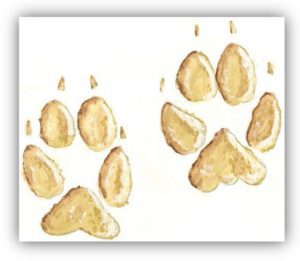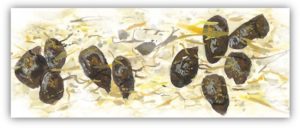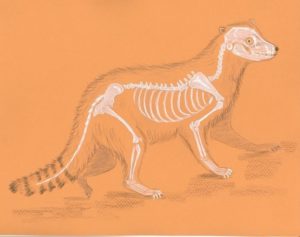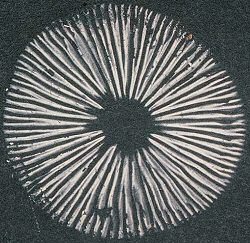It’s easy to fall victim to the mindset of “I don’t know what to draw” or “I can’t find anything interesting to draw where I live”. But never fear, help is here! For today’s challenge, I’d like to expand your normal ideas of what to sketch into the sphere of the unknown and out of the ordinary.
Below are some out of the ordinary times, places and things to sketch that you might never have considered before! I hope they will be an inspirational starting point for further explorations in your own backyard, neighborhood park or state park.
- Look for unique patterns and textures in nature: the Fibonacci spiral pattern in a pine cone or seashell, the jigsaw puzzle pieces of ponderosa pine bark, the unique shapes of leaves caused by age, sunlight, insect chewing and deer browsing.
- Sketch the non-living: a summer thunderstorm, lenticular clouds, rainbows, the multihued layers of sedimentary rock in a desert, waves and waterfalls, the purple-hued snow of a late afternoon in winter, dew drops on a leaf reflecting the summer sky, cast shadows in an aspen gallery, craters of the moon. There’s no end to the variety of phenomena you can sketch in nature if you look closely enough!
- Sketch at night: Yes! Go outside with a headlamp and sketch the moon (even better if you have binoculars, or if it’s an eclipse). Listen carefully for nocturnal animals like yipping coyotes, hooting owls and croaking frogs. Some plants are at their best, and most fragrant, at night. Seek out or consider planting night-blooming tropical garden ornamental species that attract bats and moths as their pollinators, such as Brugmansia (Angel’s trumpet).In Victorian England, it was popular to plant night-blooming gardens and saunter through them, inhaling the sweet scents of their nectars. Cactus, jasmine, tuberose, and the aptly named evening primrose and moon flower are evening bloomers as well. Search for insects and arachnids too—a UV blacklight flashlight can help you find glow-in-the-dark scorpions; super fun to do with kids! Other species emit their own bioluminescence, like fireflies (actually a type of beetle). Even a few North American mushrooms put off a glowing green light after dark. And don’t forget to look up at the sky! If you have binoculars or a telescope, all the better. Get to know the constellations, sketch the craters of the moon, or plan to be outside during the next meteor showers or eclipse.
Animal tracks and signs
- Tracks made by insects, snakes, birds, and mammals; look in dust, mud, sand dunes and snow.
- Owl pellets (that you can dissect and find complete skeletons of mice, moles, shrews).
- Slime tracks from snails and slugs, exoskeletons of cicadas and stoneflies.
- Antlion funnels and the ants they so cleverly trap, paper wasp nests.
- Shed skins of snakes, cast off feathers of birds.
- Check tree trunks for fur, antler velvet, claw marks of bear, wolf and mountain lion, chew marks from beavers and porcupines.
- Scat (easily identifiable to species with a guide book).
- The tops of logs and boulders and under trees where you may find a pile of the telltale cone scales from a squirrel’s lunch.
- Spider webs (which vary considerably in their design) and tunnels of trap door spiders.
- Wallows of collared peccaries, bedded down grass beds of elk, eskers of pocket gophers, runs of otters, food caches of pikas, burrows of seaside crabs.
- Nests and middens of woodrats, mounds of termites.
- Nests of birds; from the mud-lined robin’s nest and the mud-formed swallow’s nest to the minute nests of hummingbirds made of lichen and strengthened with spider’s web
- Beaver dams and lodges, and the trees they’ve felled for food and shelter.
- Insect galls; each type of gall insect (tiny mites, midges, aphids or wasps) specialize in infecting certain host plants, and the galls they produce are often colorful, resembling the plants’ fruits or flowers!
- Skulls and bones (and notice any gnaw marks made by mineral-hungry rodents).
- Signs of woodpeckers – the sap wells of sapsuckers, the acorns stashed in oak trees by acorn woodpeckers, excavated nest cavities in tree trunks and the subsequent piles of bark chips at the base of a tree.
- Galleries under the bark of downed logs made by ants, beetles, termites (many are quite intricate).
- A mushroom spore print (see this page of my website for directions)
Today’s Challenge
- Find something out of the ordinary to sketch, perhaps not an actual plant or animal, but signs of its existence like in the examples above. You could also choose an out of the ordinary time ( like sketching with a headlamp during the full moon), or an out of the ordinary place (like mud from a pond, observed under a dissecting scope).
- Extra credit: Post a sketch from your foray into the ‘out of the ordinary’ on our Facebook page.
Click here to return to Nature Sketching Challenge home page
Show Your Support
If you are finding value in the lessons from this Nature Sketching Challenge, I invite you to consider donating funds to support me in the creation and ongoing improvement of this program. Even the smallest donation helps me to know that I’m providing lessons that inspire, entertain and educate you about the natural world.
Click the Paypal ‘Donate’ button below to donate any amount you wish. You do not need to have a Paypal account to donate, you may choose to use a credit card if you wish. Thank you!





